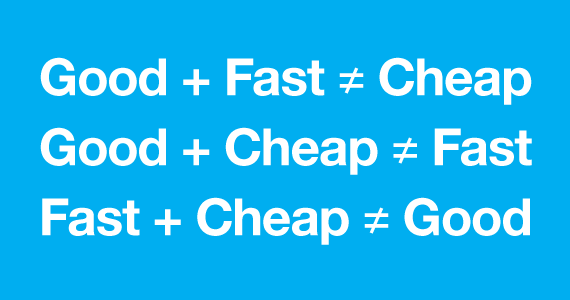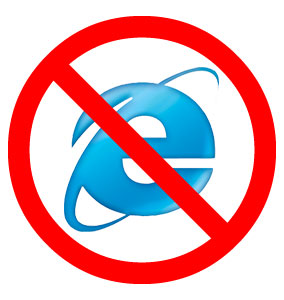
Just what a friend of mine used to say…

Just what a friend of mine used to say…
For the past 9 years, it’s not rare that we get quotation requests from various people on a certain fee to do a certain project. Some of them, however, were replied with the “it’s only something simple, and that is so expensive” sentence. So the question is, how do you value design? Design is an integral part of a thing being developed, no matter it’s a product for the mass market, or a poster for as simple as a private concert, design is important. It’s the fundamental of all things when you are trying to convey a certain message to your target market. So if that message is valuable to upscale your business, does that make design important? By all means, yes.
Designers like us often faced with the reality of intimidation from clients that approached us with the low-price-tag-but-good-results expectation. In reality, unless you are designers who eat stone and never thought that you have bills to pay, things like this just won’t happen.
Many clients of this type simply doesn’t understand that a design involves a lot of things to consider, and that a good and professional designer has certain methodologies that must be applied to their creation. Making flyers is just not about putting text on a single piece of paper. Even our grandmas could do that on Microsoft Word, have it photocopied, and voila! She created flyers for herself. No. Design is something much more important. A design should be readable, legible, and most of all understandable.
I’m going to take identity design as an example. Most people, although I absolutely believe not all, who did not go to a design school often don’t realize that their company’s identity and brand is important. Some people and almost all of our clients luckily understand this. A common mistake is that identity is often treated as an add-on to whatever product we have in the future. This is probably the very beginning on why people often say “it’s only a logo, we could have it done for $50 somewhere else.” Sure you can, but then a company with a logo worth $50, compared with another company of the same size who invested on a logo worth 100 times than that, perfectly made, can last much longer, and have a deep impact to their customers would have a better, more prominent, and more credibility to the eye of a regular person, who at first doesn’t even know what this company is all about. A friend of mine, a very eccentric designer, used to say, “If a company wants to make a logo for 10 bucks, then that is the image of their company. As low and as cheap as ten bucks. How can you expect good service from them?” While I may not be that extreme, he may have a good point in his argument.
So how come your nephew can charge you $50 for a logo, and a designer can charge you even up to millions of dollars for an identity design? It’s the methodology and the work involved. Here’s the breakdown. When a real designer designs a logo, there are things to be consider, such as:
And so on… This is why a good logo can never be done overnight. Can you imagine what Apple would be now if they decided to stick to their first illustrative logo? I can’t imagine that on an iPod. So, with this in mind, I assume that many of you agree on why we can’t charge $50 for a corporate identity, no?
A good designer never overcharge a client. They charge reasonably for what they achieved for the client. I’m not going to shamelessly promote that our company is a good one nor we don’t overcharge, but when you find a respectable company charging you a fee for something, trust me, they usually do that with lots of considerations that is useful for you, but didn’t even cross your mind. Something wannabe designers doesn’t seem to care.

Half a month ago, I wrote about our company gradually removing support for Internet Explorer 6. Well, this month we’re starting to do so. And support for IE6 is going to be accounted as an extra service.
As we try to evolve ourselves in designing websites, which often means we use many things that is not probably compatible in IE6 (such as transparent PNGs for a start), we thought that we need to do something about it. We could only hope that IE6 dies on its own soon, as the awareness is gaining. And with the fact that more people are upgrading to IE7, I think at least that’s a start, although IE7 is not our favorite browser. Compared to Firefox, Camino, Safari, or even Opera, for that matter, it doesn’t come without its own bugs.
IE6 was introduced in 2001, so it has been around for 7 years now. It was not a browser that came from natural selection. It was a browser that evolved from the market share of IE4, a savior to the internet world at its time (This was the time when Netscape goes awol and left common users with nothing but IE4 or Internet Explorer for the Mac). Over the years, it has given us lots of unnecessary hacks so that a single page would display properly there, eventhough it was semantically-coded, and validated as a valid XHTML 1.0 Strict document. Over the years, this is no longer feasible to us. When we review the things we did for IE6, we’re just helping something staying alive, but the fact is, that thing is going to die any. At the same time, we were also cocooned in the state of that limited creativity, in fear that a design might break up significantly on IE6.
Internet users, lazy corporate IT managers and staff, and ignorant Windows users (Because Mac users are saved by Safari)… Please upgrade. It’s time to move on. It’s not like you have to pay for a simple upgrade anyway. All the good browsers are free and definitely less frustrating than IE6.
More information and articles I’ve found:
SaveTheDevelopers.org
Browse Happy
Stupid IE
6 Reasons Why IE6 Must Die
37Signal: Phasing Out Support for IE6
After a few weeks of internal discussion, we’ve decided that starting September this year, we will gradually remove support for IE6. Why did we take this step? Simple, toward a better web future. Many websites, even Facebook and 37signal have taken this necessary step as well, and Microsoft has provided a force upgrade to Internet Explorer 7 since February this year. So we believe that this would be the best time to focus on developing real good standards-compliant websites that does not require any IE-specific hacks.
You can find more information about this matter here.
Over the time, we often came across potential clients that wanted us to do free pitches (or beauty contests). And over the time, we always declined, and we never give out samples of our work unless the project is a deal. Why? Well, this will be a quite long post, so brace yourselves.
There are a lot of articles in the internet about why we shouldn’t take any part on free pitches. One of our favorites is here. Of course, you can find tons of them in Google, but we’d like to take this chance to share on my opinion why we definitely shouldn’t take on free pitches.
Certain companies will often persuade us to take part on this unethical business practice with many, many reasons. Some say that this is an attempt to see whether our design style fits theirs, some say that this is to conform with the practice of Good Corporate Governance, some treated us as if they’re buying off a pack of blank CDs in Mangga Dua… No stuff, no money. Let’s discuss this three main reasons one by one.
To See If Our Design Style Fits Them
Let us put it this way. We have our collection of portfolio, easily accessible on the internet. Chances are that clients wanted to use our services because they like our portfolio, which, of course, have our style implanted all over it. So, does a test drive really necessary to see what our style is like? No. It’s just a lame excuse. One of the nastiest things they would do is steal off your design sample, and give it to a cheaper designer to finish the job off. In conclusion, steal someone’s design, don’t pay them, use cheaper services with that design, pay them. Good value? Yes. Good ethics? Not at all.
To Conform with the Practice of Good Corporate Governance
Over the years, we’ve come to realize that Good Corporate Governance requires a company to invite several designers to bid for a project. This is to make sure that there are no corruptions, collusion, or nepotism involved. I agree completely. But Good Corporate Governance DOES NOT require that company to have the invited designers give out samples of the future project. IT IS A BID. It involves only giving out quotations and terms of work, not unpaid samples. Of course, some honest companies would probably really do this whole free pitch properly, but we’re sure that some companies would steal off our design and, again, use some cheap designer to finish the work. Besides that, we think we all agree that ethically, designers that have been invited for a pitch should get paid equally to the amount of work they do for research and designing the sample (which we won’t be able to sell to other companies anyway, should we lose the pitch). This is the practice they use in most countries but here.
They Treated Us As If They’re Buying a Pack of Blank CDs
Well, we don’t think I could explain much here. Clients like this are just a group of people that we shouldn’t be servicing at all. Even fast food restaurants require you to pay first before having the meal. We don’t see any reason why we should respect clients like this.
So why shouldn’t we take part in a free pitch? Easy. First of all, it will cost us irreplaceable time and effort. Remember that we need to do research prior to designing things, that will of course cost us some time and effort. Free pitches will not guarantee that you will get paid equally. Free pitching is just a polite way of stealing. Some companies admitted that they don’t practice free pitching, but if they did one of those three above with a designer, and then they decided not to use that designer, and then perform the whole process again with a new designer, wouldn’t that count as the same practice as well? YES.
Some designers would probably disagree with us on this, as large design firms or agencies often participate in free pitches and yet they survive. I’d say, they just didn’t realize that they’re ruining their own industry. Maybe they could afford to free pitch financially, but ethically? They are just as bad as the clients. How can supporting people who steal or corrupt be good?